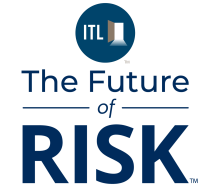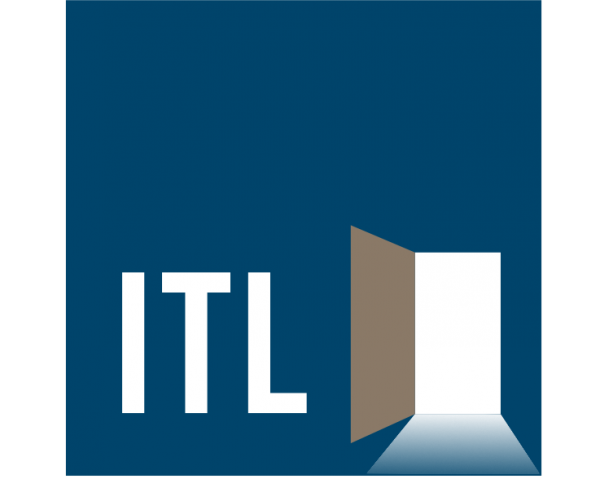Paul Carroll
Keeping in mind that conditions are changing rapidly, I’ll go ahead and ask, What's happening with the economy right now, and why are we seeing such significant disruption?
Michel Léonard
We have basically been rethinking 50 years of American foreign policy and domestic policy, but mostly foreign policy. The State Department's mission, U.S. foreign policy’s mission, is to protect American citizens abroad and America’s economic interests abroad. It’s not surprising that, as we're rethinking our foreign policy or alliances, it's also disrupting the economy.
Institutions such as NATO [North Atlantic Treaty Organization], the IMF [International Monetary Fund], and the World Bank have been significant contributors to supporting American hegemony. For instance, the NATO charter says its supreme commander must be American. What does that mean in practice? It means that all NATO members' armed forces are, arguably, directly under the direction of the U.S. general in charge of NATO. And it’s been a practice that NATO members buy American weapons, American planes, and so forth.
Traditionally, the World Bank has an American as its head and the IMF a European. The World Bank was created in part to facilitate decolonization and the IMF to facilitate transition to market economics. In the second half of the 20th century, both organizations contributed to expanding U.S. influence and to reducing, among others, France's and the U.K.’s influence in their pre-war spheres of influence.
It's somewhat challenging to see the lack of understanding that these institutions contribute to U.S. strength, not U.S. weakness. We're transforming these institutional tools, part of a system that served us very well, that put us and kept us at the pinnacle of growth, wealth, consumption, and quality of life. And I don't think folks, whether on the left or the right, Democrats or Republicans, completely understand what’s happening and what that means for U.S. economic strength.
I’ll stop there so we don’t head into politics.
Paul Carroll
Some of the projections about the impact of tariffs haven’t shown up in the numbers yet, but consumer confidence is way down. What impacts might we see in the coming months?
Michel Léonard
The polarization in the U.S. has led to significantly different expectations of the economy and, as you're pointing out, the numbers (such as GDP and CPI showing tariffs’ impacts to date) haven't turned out to be what the consensus among economists was when tariffs were announced. Indeed, five months into the year, the U.S. economy remains more resilient than originally expected. There are some reasons for that: Inventories, for example, have been cushioning companies and softening or delaying increases in prices. Tariffs themselves have been implemented, suspended, reimplemented, and so forth.
But we are indeed starting to see an effect with prices and CPI. And remember, price and inflation data are survey-based, and that's month to month. So, the data we are seeing now in May is already a month or a month and a half behind. On GDP, it's basically half a year. I think when the data is revised, it will show that consumers have it right, that the low confidence we’re seeing now will ultimately be justified by a higher CPI – they are living this inflation on a daily basis. Prices have increased significantly after several years of consecutive increases.
And this time, unlike during COVID, people don’t have the option to stay home instead of commuting, which absorbed some of the inflation. Commuting is very expensive, as is eating out in downtown areas while working. I believe the economic numbers are actually worse than what we're currently seeing in the growth data, and inventories are being depleted. We're approaching that critical point now.
The job market has tightened. Jobs are still growing, but at a much slower pace. This means the competition for employment is about to change, with job seekers losing bargaining power.
As you're pointing out, consumer confidence is at a low. What really matters most here is not the specific number. I always say it's better to be generally correct than precisely wrong. What matters here is that the current confidence numbers are comparable to during the financial crisis, the pandemic and the oil crisis.
There are significant differences between the University of Michigan and the Conference Board surveys, but they both point to consumers expecting prices to increase significantly as we go into Q3. And that has started: for example, the announcements from Amazon and Walmart and others, because inventories are being depleted. Both surveys also state that consumers expect further weakening in the job market, especially as inflation picks up.
Paul Carroll
How does tariff-related inflation differ from traditional inflation, and why don't the Federal Reserve's typical tools work as effectively against it?
Michel Léonard
I'm going to reference [former Fed Chairman Alan] Greenspan here. He used to say when it came to interest rates and monetary policy, "The medication must fit the disease." What he meant is that interest rate increases are the right medication for demand-driven inflation. When people are buying more and you want them to buy less, you raise interest rates. You're effectively making it more expensive for everyone to purchase, especially those who do so with credit cards or when buying homes and other big-ticket items like cars.
What we're experiencing now is fundamentally different. We don't have more people or money competing for a stable supply of goods. Instead, we have decreasing supply, while consumer demand is also decreasing due to weakening sentiment and confidence. The issue is that supply is decreasing faster than demand, and that’s driving prices up. This inflation is supply-side driven. Therefore, increasing interest rates won't have the intended impact to decrease inflation. Consumer demand is already contracting, and rate hikes will have little effect on the supply constraints. We need to increase supply, and the answer there lies in trade policy. That's a political decision. The administration has stated its goals, though some aspects remain uncertain.
Going back to Greenspan's principle, increasing interest rates would be the wrong medication for supply-driven inflation caused by tariffs. Technically, we would still decrease consumption if we increased interest rates. But to achieve meaningful impact, the Federal Reserve would be unlikely to succeed with modest 25-basis-point increases. The Federal Reserve would need bigger increases and a faster pace over several consecutive hikes. The Fed would need to telegraph to markets, companies, capital, banks, mortgage lenders, and auto financing companies that they'll keep raising rates.
This approach would likely bring the economy to a complete standstill. For the property and casualty insurance industry, the goods traditionally most affected by interest rates increases are big-ticket items: homes, home improvements, cars, and major appliances – especially those typically purchased with financing. The P&C industry is fundamentally about replacing, rebuilding, and repairing.
When looking at our forecast for 2025 and 2026, we expect P&C underlying growth, which is still above U.S. GDP growth in May 2025, to reverse over the next four or five quarters and start growing more slowly than overall U.S. GDP. We've always anticipated this shift. But what we're seeing now is that tariffs' impact, which would be worsened by interest rates increases, is shortening that period. If we previously expected four months of performance where P&C growth exceeded overall GDP, we now see perhaps three to four months. If conditions worsen further, that might shrink to just two to three months.
Paul Carroll
What is your assessment of where the economy and markets are headed given the current political climate and protectionist policies?
Michel Léonard
The way I've been thinking about this is through the lens of our international institutions. These multilateral organizations were designed first to create and then maintain a world with the U.S. at the center—militarily, economically, and diplomatically. We effectively had the world as our playground. Right now, we are pursuing decoupling. We haven't fully decoupled yet, but that's the goal.
If we continue decoupling, we would essentially reframe our economy from global to national— our market from 7 billion to 350 million people. I was speaking yesterday with financial professionals in Canada who noted that they are not seeing the same tariffs inflation as the U.S., and that while bilateral trade uncertainty with the U.S. is damaging GDP growth, the Canadian economy is seeing increases in investments from other countries that are now reluctant to invest in the U.S. Governments within the European Union and Canada have been eager to create other free trade zones and facilitate trade among themselves.
The implications are significant. For equity markets, U.S. companies are currently at the top of the global system with significant market access and the benefits of the dollar as the reserve currency. Equity valuations for the likes of Apple, Microsoft, our energy companies, and our banks are based on those companies being global. But if U.S. protectionism is met with retaliatory protectionism, American companies may suddenly lose access to a significant share of that global market. At the extreme, they may be left only with the U.S. market – say 75% fewer consumers and opportunities. When people ask me where's the floor for equity, I think of that 75% market loss scenario. I'm not saying it will happen tomorrow, but certainly in the longer term, there's no floor. The floor is being moved downward.
In terms of fixed income, the curve is steepening, getting closer to what, I would argue, it should be. One should receive more money for committing funds for longer periods—at least enough to cover inflation. Otherwise, you're losing money. We haven't had a significant steepening curve for a long time, so I think that can be construed as positive, especially because bonds and CDs are the backbone of how middle-class households build wealth.
In terms of the deficit, I don't think the deficit will significantly affect this dynamic. Economists have been warning for 50 years that we'll have a problem and the dollar will weaken because of growing deficits, but it hasn't happened. There are other intermediary variables at play. I'm less concerned about the deficit and a weaker dollar, but fixed income yields in the short term will probably increase.
The concern [among rating agencies on the quality of U.S. debt] isn't really about debt but about policy uncertainty. This uncertainty could drastically affect the cost of money, potentially contributing to a recession. Ironically, protectionism would also act to depress prices, creating conflicting dynamics.
For employment, the same thinking applies. Many American jobs at companies like Microsoft are supported by international operations. Similarly, in the insurance industry, while many carriers are domestic, we also have brokerage firms that operate internationally, as do many banks.
Have we fully decoupled? No. Is it done? No. Is there a way back? I don't think we've gone that far in decoupling yet. But if the rest of the world sees this as a fundamental shift in what Americans expect rather than just a temporary change in administration, then we'll start seeing more permanent changes. Such a transformation would take 10 to 20 years, but in that scenario (a full decoupling, as unlikely as this can be at this point), our equity markets could potentially shrink by 75%.
Paul Carroll
Wow.
What lessons can we draw from economic confidence crises like the one I witnessed while running the Wall Street Journal bureau in Mexico City in the mid-‘90s, and how might they apply to our current economic situation?
Michel Léonard
This is a great example. Mexico, like Argentina, demonstrates economic resilience despite pessimistic predictions. After each emerging markets bust, industry and finance people often claim, "It's over, investors won't return,” but they always do. Bondholders keep going back to Argentina. We remain a huge market, and that's not going to change.
Free trade advocates have always acknowledged that open trade borders lead to jobs redistribution—lower-skilled jobs move to countries with cheaper labor. Under U.S. leadership, the world economy has grown incredibly. The Chinese couldn't have lifted hundreds of millions out of poverty and created a middle class without global trade. The same applies to India and Pakistan. This historic transformation deserves applause.
The flip side is that substantial wealth transferred from the U.S. abroad, disrupting communities throughout America. Those good union and public sector jobs—many are gone. Unionization rates have declined. Pro-free trade economists and policymakers always said we need to retrain our people. Montreal, where I'm originally from, did this exceptionally well. It was like the Rust Belt—losing its harbor and entering a structural recession. But all levels of government there invested heavily in retraining, for example creating thriving IT, aerospace, and hospitality sectors.
When a significant portion of society feels disenfranchised and unrepresented—this is Political Economics 101, not politics—they disconnect. They turn to third parties or, in emerging markets, fundamentalism. For our democracy to survive, we need an economic system where everyone feels their prospects can improve. We're not aiming for France's economic model — I don't think Americans want that—but we need a system where everyone believes their situation can get better. That's a laudable goal this administration is trying to achieve, and I hope there's a middle ground. All of that said, we can contribute to people understanding the impact of policy choices regarding prices and inflation.
Paul Carroll
Thanks, Michel. I feel smarter than I was 20 minutes ago. I hope our readers and listeners feel the same way.








